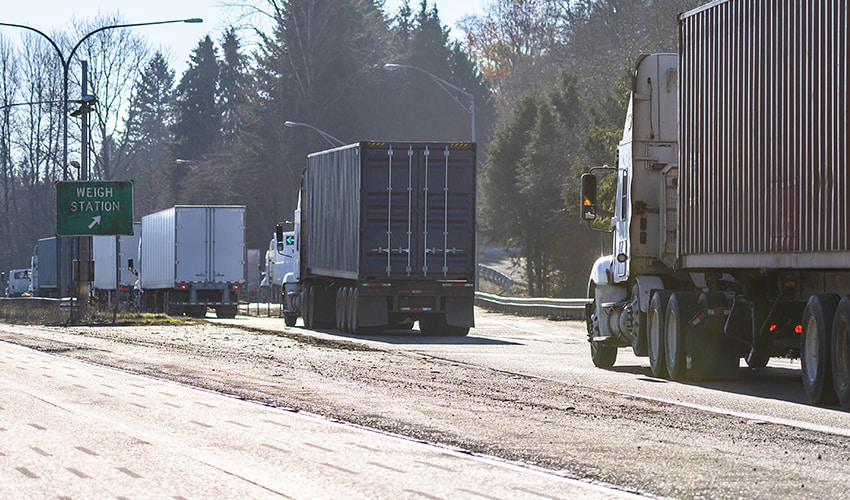Exceeding the towing capacity of your commercial vehicles puts drivers and other road users in danger, so fleet managers need to have a thorough understanding of gross vehicle weight ratings (GVWR).
GVWR meanings and GCWR definitions are often mixed up. That’s without adding other acronyms and curb weights, etc., into the mix too!
In this guide, we’ll cover the proper GVWR definition. We will also explain other key terms about towing capacity to help keep your fleets operating safely.
What is GVWR?
GVWR stands for Gross Vehicle Weight Rating.
GVWR Definition
The manufacturer determines gross vehicle weight ratings. The maximum limits consider the weight of the empty vehicle (curb weight), plus the weight of passengers, fuel, and cargo (payload). Ratings vary by vehicles and models because they need to account for differences in:
- Frames
- Suspension systems
- Axels
- Wheels
GVWR vs. GCWR
Only the capacity of the vehicle itself is measured by GVWR. Trailer weight is not included. That’s where the gross combined weight rating (GCWR) comes in. The GCWR refers to the combined maximum load capacity once a trailer has been attached to a vehicle.
Let’s recap and look at some other important definitions before we continue:
What is curb weight?
The weight of an empty vehicle. On commercial trucks, this includes the weight of the bed as well as the cab.
What is the payload?
The weight of any passengers, fuel, and cargo.
What does GVWR mean?
The maximum load capacity of a vehicle, taking both curb weight and payload into account.
What is GCWR?
The combined weight capacity of a vehicle with a trailer of cargo attached.
Some other acronyms and definitions you may come across include:
- GAWR (gross axle weight rating) – The maximum weight permitted on each axle.
- GTW (gross trailer weight) – The weight of the trailer without cargo.
- TW (tongue weight) – The weight exerted on the coupling point between the vehicle and trailer.
- Dry weight – The weight of a vehicle without fuel or other fluids.
Why is GVWR Important?
There are several logistical and legal implications for trucking companies regarding GVWR, meaning it’s essential that you know and abide by the limits.
- Trucks above specified gross vehicle weights require drivers to have a commercial driver’s license (CDL).
- Vehicles above certain GVWRs require additional insurance.
- Overloading can damage the suspension, wheel bearings, and steering system, increasing the likelihood of a breakdown.
- Exceeding weight limits puts pressure on the entire truck, causing metal fatigue that will ultimately reduce a vehicle’s lifespan.
- Ticket fines for exceeding GVWR limits can add up to thousands of dollars.
- Truck handling is reduced when a truck is overloaded, impacting the driver’s ability to brake and maneuver properly, and increasing the risk of an accident.
- If overloaded trucks are involved in an accident, you may face criminal charges.
How Does GVWR Relate to Towing Capacity?
GVWR and towing capacity may seem similar, but they should be considered differently. The GVWR helps determine tow capacity because a truck can only tow as much as its rating permits.
But remember that only the vehicle’s weight, fluids, cargo, and passengers contribute to the gross vehicle weight rating. Conversely, total towing capacity (GCWR) refers to how much weight a vehicle can pull with a separate trailer attached behind.
Fleet managers need to be aware of both limits if they are to avoid exceeding either parameter. To determine the maximum tow capacity for each semi truck in your fleet, you’ll need to know each truck’s weight rating and compare them to the gross weight of each respective trailer.
From there, it’s pretty straightforward. If the manufacturers’ weight ratings are higher than the trailer’s total weight, it’s safe to tow. If the trailer weight exceeds the manufacturer’s rating, it’s not.
GVWR Explained: Finding the Gross Vehicle Weight Rating
There’s no formula to determine GVWR as the chassis manufacturer always sets maximum limits. Because it is such a significant number to know, it’s common practice to make GVWR details as easy to find as possible. You’ll find them in a variety of locations, including:
- The owner's manual
- On the driver-side doorjamb
- In the towing capacity guide on the manufacturer’s website
Lytx Can Help with Compliance
Compliance can be complicated, which is why it’s important to find fleet management solutions that make it easier to protect your vehicles, drivers, and cargo. Take your next steps to streamline DOT compliance in your fleet, and contact our team to book a demo to see our software in action.
